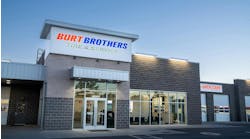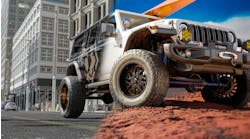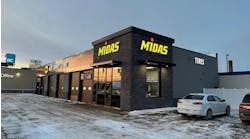Do you remember hearing about Martin Shkreli, also known as “The Pharma Bro?” He was the guy who took over a small company, Turing Pharmaceuticals, and raised the price of the life-saving drug, Daraprim, from $13.50 per pill to $750 a pill.
This raised such an uproar that he was investigated and eventually convicted of securities fraud and forced to disgorge $40 million in profits and forfeit $7.4 million in personal assets. He served about four years in jail and is forever barred from running a pharma company and a public company.
I bring this up only to provide context for the rest of this column. My first reaction when I heard about Pharma Bro was, “Why didn’t I think of that?” You see, I’m firmly in the camp of charging what the market will bear. As I’ve said before, life is easier with higher margins.
In my time in the tire industry, I’ve observed up close the power of pricing. Company stores losing money? Hmm, let’s organize regular price increases across all regions. Tire sales district losing money? Hmm, let’s get those labor rates way higher. Tire store with good traffic not making money? Hmm, let’s put higher prices in the point-of-sale system and tell salespeople they cannot — under any situation — change them. (And the store breaks even for the first time ever!)
I’m by no means an expert anymore on pricing in the tire and auto service business, but I recall the service side being particularly conducive to testing price elasticity. For example, what’s a good price for a radiator hose? And how much should you charge to install it? How about what the market will bear?
The tire side does not seem to have this same level of elasticity, particularly with branded products and the ability to check prices on the internet. But I guess that’s why God invented private label tires.
With inflation still being above the Fed’s target rate, every tire dealer needs to be regularly raising prices. Either look at your prices periodically or raise them when you are confronted with increases yourself. And think about how you might integrate dynamic pricing into your business.
You’ve likely heard of the bad press Wendy’s restaurants recently received. On an earnings call with analysts, Wendy’s CEO boasted of a $20 million investment in new menu boards to be followed by a $10 million investment in artificial intelligence and other technology to enable dynamic pricing — the raising and lowering of prices on menu items — along with the ability to offer customized food combos.
The media picked up on it and described it as “surge-pricing,” which many consumers hate. Wendy’s was on the defensive for a bit and offered $1 hamburgers to distract consumers, but they are still going ahead with their investments and plans to implement dynamic pricing in 2025.
While they share similarities, there are key differences between dynamic and surge pricing.
Dynamic pricing is where prices are adjusted in real-time based on factors such as demand, supply, weather, day of the week, competition and customer behavior. It's currently used in retail, hospitality, transportation and entertainment.
The goal is to optimize revenue by charging the highest price customers are willing to pay at any given moment, while still remaining competitive and attractive.
In comparison, surge pricing is typically associated with ridesharing platforms like Uber and Lyft. Surge pricing occurs during periods of high demand, when the supply of available drivers is insufficient to meet rider requests. Prices are automatically increased to encourage more drivers to come online and fill the demand. Surge pricing is often triggered by external factors, such as rush hour, bad weather or special events.
If you choose to experiment with dynamic or surge pricing, whatever you do, take baby steps, don’t upset your customers and avoid bad press like the plague. People will remember a bad experience and make alternative choices. For example, I’m back to renting cars when I travel now since an Uber ride in Denver this year at 6 a.m. in minus-15-degree weather surged from $30 to over $150 after six drivers canceled and I almost missed my flight.
Applications of dynamic pricing in the tire and service business could be used during this summer’s travel season. If you see a big uptick in demand at the start of summer, you might experiment with dynamic pricing by charging one rate for people who make appointments and a higher rate for drop-ins who want service on demand.
Dynamic pricing could also be used for personalized pricing strategies tailored to individual customer segments. Keep it simple to start and think about what you might do with new customers who have never been into one of your stores, lapsed customers who have not been in for more than 18 months and your best customers who come back regardless.




